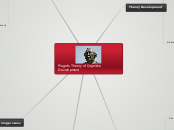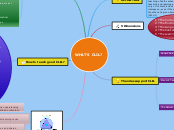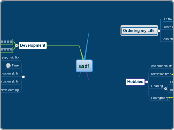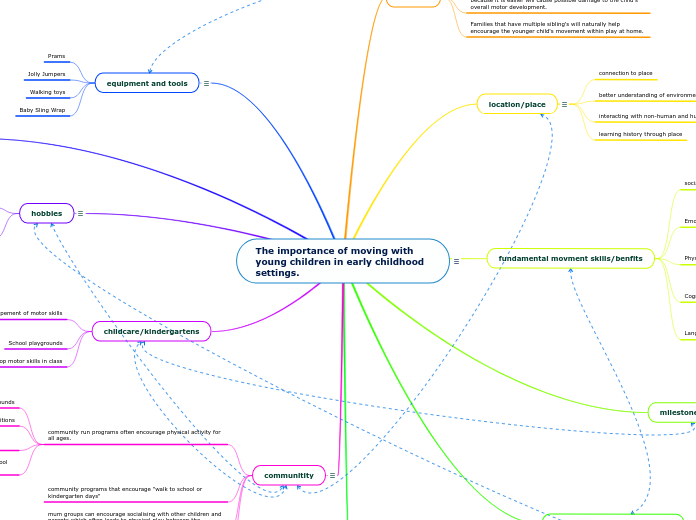Intro Video
Piaget's Theory of Cognitive Development
References:
books
Eggen and Paul 2010, Educational Pychology: Windows on Classrooms
websites
http://www.learning-theories.com/piagets-stage-theory-of-cognitive-development.html
http://en.wikipedia.org/wiki/Jean_Piaget
http://psychology.about.com/od/piagetstheory/a/keyconcepts.htm
http://psychology.about.com/od/behavioralpsychology/l/bl-piaget-stages.htm
http://www.simplypsychology.org/piaget.html
http://psych.colorado.edu/~colunga/P4684/piaget.pdf
http://en.wikipedia.org/wiki/Piaget's_theory_of_cognitive_development
Promoting the learning process
Discovery learning where the student learns through self-initiated, active (spontaneous) participation and exploration
Giving the student real-world challenges to disrupt pre-conceived notions; create disequilibrium in the student
Teacher does not direct tuition; teacher facilitates learning
A deemphasis on practices aimed at making children adult-like in their thinking [accelerating through the stages could be worse than no teaching at all]
Acceptance of individual differences in developmental progress [i.e. streaming] + Adaptation of instruction to the leaner's developmental level
Getting students to work together to learn from one another [allowing students of mixed ability to work together]
Using active methods to rediscover or reconstruct "truths"
Focusing on the process of learning and not the end result
Making use of the environment and presenting problems to create a new situation, encouraing disequilibrium so as to encourage the student to accommodate
Key Concepts
Stages of Development
Development is biologically based and changes as child matures
A child moves through four different stages of mental development
Formal Operational Stage (12 years and up)
Begin to think abstractly and reason about hypothetical problems.
Begin to use deductive logic, or reasoning from a general principle to specific information.
Concrete Operational Stage (7 to 11 years old)
Begin to thinking logically about concrete events.
Begin using inductive logic or reasoning from specific information to a general principle.
Preoperational Stage (2 to 7 years old)
Begin to think symbolically and learn to use words and pictures to represent objects.
Tend to be egocentric and struggle to see things from the perspective of others.
Senserimotor Stage (Birth to 2 years old)
Knowing the world through sensations and movements.
Realizes that their action can cause things to happen in the world around them.
Assimilation, Equilibriation, Accommodation
Intellectual growth is a process of adaptation
Equilibration
A force which moves development along; striking a balance between assimilation and accommodation
Helps a child to move from one stage of development to another
Subtopic
Accommodation
Happens when existing schema (knowledge) does not work and need to be changed to deal with the new situation
Assimilation
Dealing with new stuations using existing schemas
Schemas
The basic building blocks of knowledge
As a child grows, his/her schemas become more numerous and elaborate
Develops new information through experiences that modify and changes previous schema
Is the mental representation of the world that is used to understand and to respond to situations
Categories of knowledge that helps in understanding the world
Characteristics of theory
Quantitative versus Qualitative
Qualitative: When a qualitative change occurs, the infant/child enters a new stage of development
Universal Vs Culture specfic development
Universal: The same sequence of development occurs in children all over the world.
Nature Vs Nurture
Nurture:
– Adaptation: Children respond to the demands of the
environment.
– Organization: Organise new information.
Nature: Maturation of brain; ability to perceive, learn, act
Continuous Vs Discontinuous
Sources of discontinuity: There are distinct
stages of cognitive development, with the
following properties:
– Children at different stages think in different ways.
– The type of thinking at each stage pervades topic and content areas.
– Transitions to higher stages of thinking are not necessarily continuous.
– The sequences of stages are stable for all people through all time. Stages are not skipped.
Sources of continuity: - Assimilation
- Accommodation
- Equilibration: People balance assimilation and
accommodation to create stable understanding
Theory Development
Studies Methodology
Semiclinical Interview
Ask children standardized questions, followed with a series of nonstandard questions based on how they answer the first question
Combination of psychological and clinical methods
Clinical Interviews and OBservations
Specific Studies
Pendulum Tasks
Conservation of Liquid and Number
Three Mountains Task
Blanket & Ball Study
examine child's perception of the world through responses
observe how child reasoned according to the questions asked
questioned child and carefully examining responses
Psychometrics
draw conclusions about logic processes they had
analyse thinking process
Maturalistic Observation
theorised that
younger children think differently
(Qualitative difference)
younger children are not dumber
(Quantitative difference in IQ)
Instigation
Observed his own children's development
developed theory of 4 stages of cognitive development
Piaget was marking IQ tests and noticed younger children's answers'
qualitatively different from older children
had similar mistakes
that adults did not make
Originator: Jean Piaget (1896-1980), Swiss
Director of International Bureau of Education
Philosopher
psychologist
Biologist









